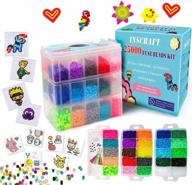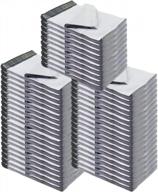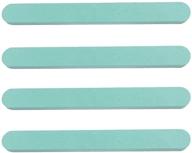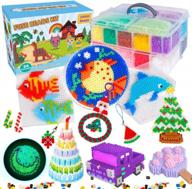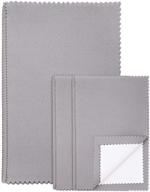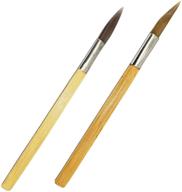The Basics of Jewelry Polishing
Keeping your jewelry clean and shiny not only makes it look its best, but also helps maintain its value and extend its lifespan. While professional jewelers have industrial machines for buffing and polishing, it's possible to get great results polishing your jewelry at home with some simple tools and techniques.
Jewelry Polishing Compounds
Special polishing compounds are applied to buffing wheels or jewelry during the polishing process. They contain microscopic abrasives that remove tarnish and smooth the surface of the metal. Polishing compounds come in various grits for different polishing stages.
- Coarse compound - Used for initial buffing to remove scratches
- Medium compound - For general polishing
- Fine compound - For final buffing to a brilliant shine
Common polishing compounds include:
| Compound | Use |
|---|---|
| Aluminum oxide | Most metals |
| Tin oxide | Silver |
| Cerium oxide | Gold and platinum |
| Chromium oxide | Steel |
Buffing Wheels
Buffing wheels apply the polishing compounds to jewelry. They are made of tight coils of cotton or muslin threads. Different wheels are used for different polishing stages and metals.
- Loose muslin wheel - For preliminary buffing
- Dense muslin wheel - For medium polishing
- Flannel wheel - For applying fine compound
- Felt wheel - For final shine on delicate jewelry
Steam Cleaners
Jewelry steam cleaners use hot vapor to deep clean jewelry prior to polishing. The combination of heat and moisture lifts dirt and oils from cracks and crevices. Steam cleaning ensures polishing compounds work effectively.
Ultrasonic Cleaners
Ultrasonic cleaners use high frequency sound waves to agitate a cleaning solution. This dislodges grime for a thorough pre-polish cleaning. They are especially useful for cleaning jewelry with intricate details.
Hand Polishing
You can polish jewelry by hand using polishing cloths coated with fine polishing compounds. This takes effort but can be effective for small jewelry pieces. Use a soft toothbrush to clean crevices beforehand.
With some basic tools and materials, you can clean and polish your favorite jewelry pieces at home. Taking the time to properly polish your jewelry helps keep it looking beautiful for years to come.
Types of Jewelry Polishing Tools
While professional jewelers have access to specialized equipment, there are many effective jewelry polishing tools available for home use. With the right supplies and techniques, you can keep your precious metals, gemstones and other jewelry looking like new.
Rotary Tools
Rotary tools, also called flex shafts or dremels, are versatile for polishing jewelry. They rotate a buffing wheel at high speeds while the handpiece allows control and precision.
- Cordless tools allow more freedom of movement.
- Optimal speed is around 15,000 - 20,000 RPM for buffing.
- Accepts interchangeable heads like grinding stones, brushes and polishing wheels.
Brands like Dremel and Foredom offer quality rotary tool kits for home jewelry buffing.
Buffing Machines
These motorized machines have rotating spindles to mount buffing wheels. They allow hands-free polishing for efficiency.
- Bench models take up minimal space.
- Larger stand models accommodate multiple wheels.
- Need 1400-1700 RPM for proper buffing speed.
Quality buffing machines are available from companies like Beacon, Foredom and Stark.
Ultrasonic Cleaners
Ultrasonic cleaners use cavitation bubbles induced by high frequency soundwaves to lift dirt and oils from jewelry so polishing compounds can work effectively.
- Heat options improve cleaning power.
- Timer allows setting cleaning cycles.
- Holds small jewelry items suspended in solution.
Top ultrasonic cleaner brands include Magnasonic, Famistar and iSonic.
Another interesting products
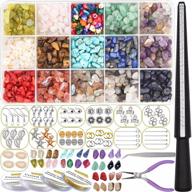

26 Review



31 Review

Steam Cleaners
Jewelry steamers use hot vapor to penetrate grime in intricate crevices. This deep cleaning preps jewelry for optimal polishing results.
- On-demand steam available in seconds.
- Water reservoir allows uninterrupted steaming.
- Includes jewelry cleaning solution and accessories.
Quality steam cleaner models are made by GemOro, iSteam and Steamfast.
Polishing Cloths and Compounds
Soft cloths infused with polishing compounds offer a portable and mess-free option:
- Diamond polish cloths for metal jewelry.
- Impregnated buffing cloths for fine jewelry.
- Polishing strips for narrow spaces.
Leading brands include Zam, Connoisseurs and Sunshine Polishing Cloth.
Hand Tools
Manual tools allow polishing jewelry without machinery:
- Polishing pins with buffing heads.
- Flexible shaft hand pieces with compound-coated muslin wheels.
- Pliers with polishing surfaces on the jaws.
Quality hand polishing tools are made by designers like Otto Frei, Lindstrom and Fretz.
With the right selection of jewelry polishing supplies, you can efficiently clean and shine your precious metals, gemstones and other pieces from the comfort of home.
Jewelry Polishing Compounds and Pastes
Polishing compounds contain microscopic abrasive particles suspended in waxy or greasy binders. When applied to buffing wheels or jewelry surfaces, these particles remove tarnish and smooth metals to a brilliant shine.
Top products in 💎 Jewelry Polishing & Buffing


3 Review



3 Review

Types of Abrasives
Different compounds use specific abrasives suited to particular metals:
- Aluminum oxide - All metals
- Chromium oxide - Steel
- Tin oxide - Silver
- Cerium oxide - Gold, platinum
- Colloidal silica - Most gemstones
Similar products
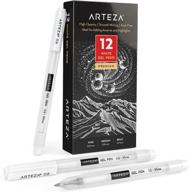

42 Review

Grits
Compounds come in various sized grits for different polishing stages:
- Coarse - Removes scratches and pits
- Medium - General smoothing
- Fine - Final brilliant polish
Forms
Compounds are produced in several forms:
- Bars - Solid blocks rubbed directly on jewelry
- Pastes - Thick compound for application to wheels
- Liquids - Thinner for easier coating of wheels
- Impregnated wheels - Compound already applied to wheel
Application
Compounds can be applied in different ways:
- By hand - Rub compound bars directly on jewelry
- On buffing wheel - Spread pastes or liquids on wheel surface
- Pre-treated wheel - Use impregnated buffing wheels
- With Bristle brush - Brush liquids onto jewelry surface
Buffing Process
Multiple compounds are used in sequence for best results:
- Cutting compound - Coarse grit removes damage
- Smoothing compound - Medium grit levels surface
- Polishing compound - Fine grit for mirror shine
- Rouge - Very fine grit enhances brilliance
Working through multiple grits of compounds results in jewelry that looks professionally polished.
Popular Brands
Some leading jewelry polishing compound manufacturers include:
- Zam
- Pikal
- Gesswein
- McKay
With quality compounds suited to your particular metals and proper buffing techniques, you can achieve beautiful, professional level polishes on your jewelry pieces.
Jewelry Buffing Wheels
Buffing wheels are essential tools for polishing jewelry. They hold and apply polishing compounds to smoothly and evenly polish jewelry surfaces to a brilliant shine.
Materials
Wheels are made from tightly stitched fabrics:
- Cotton muslin - Most common and affordable material
- Flannel - Softer surface for final polishing
- Felt - Extra soft for delicate jewelry
Types
Wheels suited for different polishing tasks include:
- Sewn muslin - For preliminary smoothing
- Spiral sewn - General purpose polishing
- Rolled leather - Good heat resistance
- Tapered wood - Handy cone shape
Grits
Wheels come in different densities to pair with polishing compounds:
- Loose spiral - Coarse grit compounds
- Medium density - Mid grit compounds
- Tight spiral - Fine grit compounds
Shapes
Common wheel shapes include:
- Disc - Flat surface for wide pieces
- Wheel - Standard dome shape
- Point - Conical polishing of facets
- Cylinder - For polishing inside rings
Preparation
Proper preparation maximizes wheel effectiveness:
- Stitching defects - Remove loose threads
- Dressing - Use star wheel to expose fresh fabric
- Coating - Apply polishing compound thoroughly
Technique
Good technique prevents wheel damage:
- Even contact - Avoid excessive pressure
- Proper speed - Use manufacturer recommended RPM
- Intermittent pressure - Lift work periodically
With quality wheels and proper usage, you can efficiently achieve professional polishes on jewelry pieces.
Jewelry Steam Cleaners
Jewelry steam cleaners use hot vapor to effectively clean jewelry prior to polishing or repair work. The combination of heat and moisture deeply penetrates crevices to lift away grime.
How They Work
Steam cleaners generate a pressurized jet of hot steam to blast dirt from jewelry:
- Water reservoir is heated to create steam.
- Steam is forced through nozzle at high pressure.
- Heat and moisture dislodge and dissolve contaminants.
- Some models vibrate trays to further loosen debris.
Benefits
Steam offers advantages over other cleaning methods:
- Deeper clean than ultrasonic or soak cleaning.
- More eco-friendly than harsh chemicals.
- Safe for gemstones, crystals and delicate metals.
Features
Look for these useful features in a jewelry steam cleaner:
- Quick steam time - Ready in under a minute.
- Variable steam control - For different cleaning needs.
- Large water tank - Allows longer continuous use.
- Accessories like tweezers and cleaning basket.
Settings
Typical settings include:
- Steam strength - For heavy or light cleaning.
- Steam duration - 5-10 minutes recommended.
- Heated cycle - For tough, set-in grime.
- Drying cycle - Eliminates moisture after cleaning.
Maintenance
Proper care ensures optimal performance:
- Empty water tank after use.
- Rinse away mineral deposits regularly.
- Follow descaling procedures as needed.
- Replace any worn gaskets or seals.
Safety Tips
- Avoid direct steam contact with skin.
- Allow unit to fully cool before handling.
- Ensure stable, level placement.
- Unplug unit when not in use.
With routine care, a quality jewelry steam cleaner can provide effective deep cleaning for years.
Ultrasonic Jewelry Cleaners
Ultrasonic cleaners are efficient tools for deep cleaning jewelry prior to polishing or repair work. High frequency sound waves agitate a solution to lift away grime.
How Ultrasonic Cleaning Works
A transducer at the base of the unit converts electrical energy into high frequency sound vibrations:
- Frequencies typically range from 20,000 - 400,000 Hz.
- This creates cavitation bubbles in the cleaning solution.
- Bubbles implode to dislodge contaminants from jewelry surfaces.
- Debris is suspended in solution for easy rinsing.
Solutions
Specialized solutions improve cleaning and protect jewelry:
- Soap solutions emulsify and lift grease and dirt.
- Ammonia solutions dissolve heavy tarnish and corrosion.
- Phosphate-free formulas prevent corrosion and etching.
Benefits
Ultrasonic cleaning offers many perks:
- Safe for gemstones and delicate materials.
- Removes dirt from crevices and under gallery areas.
- More eco-friendly than harsh chemicals.
- Compact size takes up minimal space.
Key Features
Look for these features in a quality ultrasonic cleaner:
- Stainless steel tank for durability and easy cleaning.
- Transducers tuned to optimal ultrasonic frequencies.
- Heater for boosting cleaning power.
- Drain valve for easy solution changes.
Using and Caring for Your Ultrasonic
Follow basic guidelines for best results and long term use:
- Do not overfill solution past indicated levels.
- Change solutions regularly to prevent recontamination.
- Avoid running unit dry, which can damage transducers.
- Descale tank and drain periodically to prevent mineral buildup.
With proper use and care, an ultrasonic cleaner provides reliable deep cleaning for jewelry polishing work.
Achieving A Professional Finish On Your Jewelry
To achieve a professional finish on your jewelry, there are several steps you can take. First, it's important to clean your piece of jewelry and prepare it for polishing. This can involve removing any surface scratches with a smooth, continuous file and then moving onto a finer cut to smooth off the surface. Next, you can use a variety of tools and techniques to polish your jewelry, including hand polishing with the right tools or using machinery for excellent results. It's also important to never skimp on the preparation and always work from coarse to smooth, using a medium or coarse cut file to remove any stubborn scratches. Additionally, you can employ fabric wheels and compounds for buffing, with a cutting compound being the roughest and able to remove marks left by 320-400 grit abrasive. Finally, sanding jewelry is a necessary polishing technique, as excess metal may have been left behind, as well as fire scale, pickle residue, and any other imperfections.
How To Use A Buffing Machine For Jewelry Polishing?
Using a buffing machine for jewelry polishing can be an effective way to achieve a professional finish. Here are some steps to follow:
- Choose the right buffing wheel for your jewelry. The coarse wheel buff is coated with a tripoli polishing compound and buffs out scratches and blemishes.
- Apply the right polishing compound to the buffing wheel. Using the right buff with the right compound will allow you to get the best polish possible.
- Turn on the buffing machine and let it reach the desired speed.
- Hold your jewelry piece against the buffing wheel, making sure to keep it moving and not staying in one spot for too long.
- Use a light touch and let the machine do the work. Too much pressure can cause damage to your jewelry.
- After buffing, use a soft cloth to remove any excess polishing compound from your jewelry.
- Repeat the process with a finer buffing wheel and polishing compound to achieve a mirror-like finish.
Remember to always wear protective gear, such as gloves and eye protection, when using a buffing machine for jewelry polishing.
What Safety Precautions Should Be Taken When Using A Buffing Machine For Jewelry Polishing?
When using a buffing machine for jewelry polishing, it is important to take the following safety precautions:
- Wear protective gear, such as gloves, goggles, and face shields, to protect your hands and eyes from flying debris and polishing compounds.
- Secure your hair, clothing, and jewelry to prevent them from becoming entangled in the moving machinery.
- Only one person should operate the machine at a time.
- Use hand vises or wedge clamps to keep a firm grip on the workpieces you are polishing, as the metals can become hot.
- Use the right buff with the right polishing compound to achieve the best polish possible.
- Avoid using too much pressure when holding your jewelry piece against the buffing wheel, as this can cause damage to your jewelry.
By following these safety precautions, you can ensure a safe and effective jewelry polishing experience with a buffing machine.





